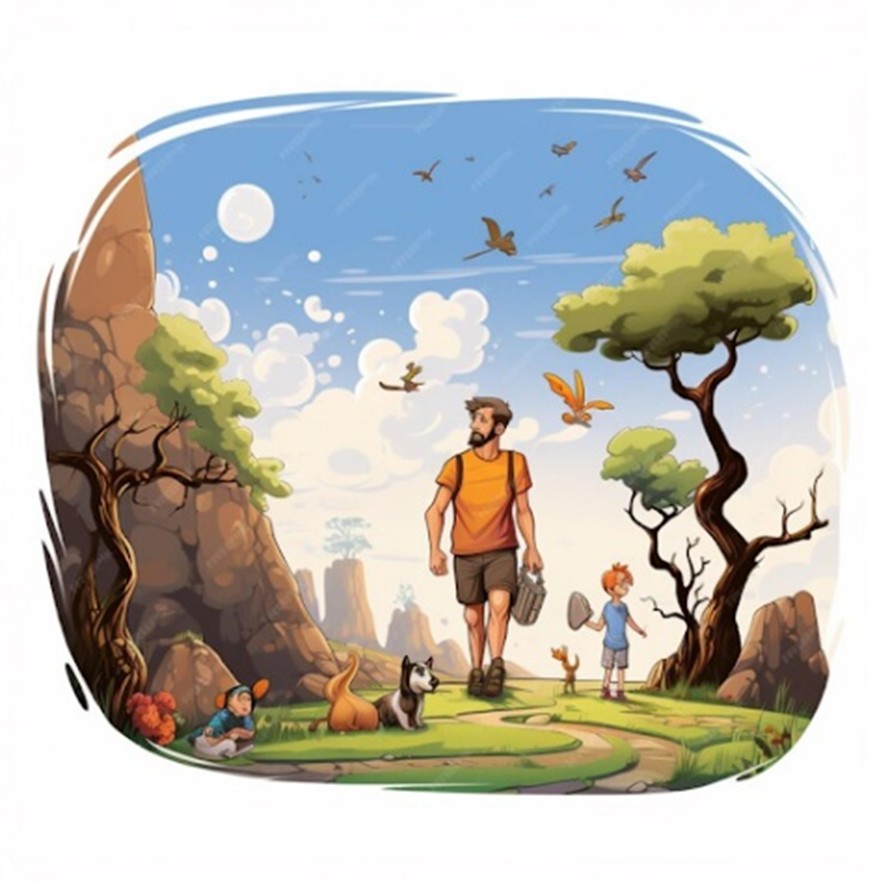2nd PUC English Question and Answer – To The Foot From Its Child
Looking for 2nd PUC English textbook answers? You can download Chapter 8: To The Foot From Its Child Questions and Answers PDF, Notes, and Summary here. 2nd PUC English solutions follow the Karnataka State Board Syllabus, making it easier for students to revise and score higher in exams.
Karnataka 2nd PUC English Textbook Answers—Reflections Chapter 8
To The Foot From Its Child Questions and Answers, Notes, and Summary
2nd PUC English Chapter 8
To The Foot From Its Child
Scroll Down to Download To The Foot From Its Child PDF
Comprehension I.To the Foot from its Child
Question 1.
What would the foot like to be?
Answer:
It would like to be a butterfly or an apple.
Question 2.
Line 1 of the poem conveys
(a) the immense possibilities of life.
(b) the unrestricted nature of a child’s imagination.
(c) the child’s ignorance of harsh realities.
Answer:
(c) the child’s ignorance of harsh realities.
Question 3.
What does time teach the child?
Answer:
Time teaches the child that it cannot be a butterfly or an apple, nor can it fly.
Question 4.
The line “stones and bits of glass, streets, ladders and the paths in the rough earth”
(a) indicates hardships one has to face in life.
(b) provides a mere description of a road.
(c) suggests the good and bad experiences of growing up.
Answer:
(a) indicates hardships one has to face in life.
Question 5.
Why does the child’s foot feel defeated?
Answer:
The child’s foot feels defeated because the outside world prevents it from fulfilling its dreams.
Question 6.
Which words convey the real experiences of the foot?
Answer:
The phrase “But in time, stones and bits of glass, streets, ladders, and the paths in the rough earth” conveys the real experiences of the foot.
Question 7.
Which lines in the poem suggest the transformation of the foot?
Answer:
The lines “And the tiny, petaled toes of the child grow bunched and out of trim, take on the form of eyeless reptiles with triangular heads, like worms” suggest the transformation of the foot.
Question 8.
“… condemned to live in a shoe” suggests that the foot is (a) a prisoner
(b) a criminal
(c) forced to give up its dreams
Answer:
(c) forced to give up their dreams
Question 9.
Identify some examples of the mundane activities of an adult.
Answer:
Examples of mundane activities for adults include walking on rough paths filled with stones and glass, climbing ladders, ploughing fields, mining, and engaging in markets and politics.
Question 10.
What does the line “until the whole man chooses to stop” mean?
Answer:
It signifies the end of a person’s life, indicating death.
Comprehension II.To the Foot from its Child
Question 1.
We think of a foot as belonging to a person, but Neruda says ‘To The Foot From Its Child’. Why?
Answer:
We usually think of a foot as part of a person, but in “To the Foot from its Child,” Neruda uses the foot as a metaphor for life. He traces its journey from childhood to adulthood, highlighting the changes and struggles it faces until it eventually reaches its end in burial.
Question 2.
Pick out the expressions that suggest the child’s imagination is fertile.
Answer:
The expressions “a butterfly” and “an apple” suggest the child’s fertile imagination.
Question 3.
What contrasting descriptions of the foot does the poem offer? Why?
Answer:
The poem presents several contrasting descriptions of a child’s foot. Initially, it is unaware of its identity as a foot. However, as it grows older and faces life’s challenges, it becomes conscious of its confinement within a shoe, feeling trapped in darkness and unable to communicate with the other foot.
As the man ages, the foot also becomes rough and suffers from age-related ailments, realizing it cannot remain young forever. While the man must eventually confront death, the foot remains oblivious to these changes.
Question 4.
The poem begins with the idea that the child’s foot is not yet aware that it is a foot; at the end, the foot is unaware that it has ceased to be afoot. What is the poet trying to convey through these statements?
Answer:
The poet conveys that the foot is unaware of the events around it. It doesn’t realize its own freedom or origin. Just as the man lives a life of struggles, the foot also experiences hardship. Even after the man’s death, when his soul may transform into something else, the foot remains oblivious to it all.
Question 5.
How can the foot fly or become an apple after it is buried?
Answer:
The release from the shoe is nothing but freedom. It (the foot) imagines being as free as an apple because man’s soul is free after his death, so the foot feels free and imagines to be an apple.
Question 6.
How does Neruda describe the busy life of the individual as represented by the foot?
Answer:
Neruda portrays the individual’s busy life through the foot’s relentless movement to provide for his family. The person cannot afford to stop working, as survival and caring for his family depend on it. He works tirelessly, often without rest, in various fields like markets, politics, mines, and agriculture, continuing this effort until the end of his life.
Question 7.
What does the last stanza of the poem mean? Can you think of parallels in nature?
Answer:
The last stanza suggests that death is part of a natural cycle, where the body decomposes and becomes fertilizer, helping new life, such as an apple tree, to grow. This tree, in turn, provides shelter for a butterfly. Life and death are interconnected in a continuous cycle, much like nature’s own cycles of birth, decay, and renewal.
Comprehension III.To the Foot from its Child
Question 1.
Examine how Neruda’s poem works out the contrast between colorful dreams and the humdrum reality of life.
Answer:
Dreams are full of color and possibility. In the poem, the foot dreams of flying like a bird and becoming an apple, symbolizing freedom and imagination. However, these dreams are distant from the harsh realities of life, where struggles, limitations, and a lack of freedom prevail. Thus, while dreams are vibrant, reality remains difficult and constraining.
Question 2.
Neruda’s poem is a salute to the ordinary human being, who continues with life braving all odds. Do you agree? Give reasons.
Answer:
Yes, I agree that Neruda emphasizes the importance of the ordinary man, who embodies hard work and perseverance in daily life. Despite being tired or unwell, he must keep working to achieve his goals. The poet highlights the significance of ordinary people because their simple, hardworking lives are meaningful and contribute to a fulfilling, complete existence.
Question 3.
Is Neruda criticizing how society crushes childhood dreams and forces people into rigid moulds?
Answer:
Yes, Neruda critiques society for burdening children with expectations and awards. Instead of allowing them to enjoy their childhood, children are pressured to work hard for good grades to secure their futures. Society restricts their freedom, forcing them to follow a path dictated by societal norms rather than their own desires.
Question 4.
‘Foot’ is a keyword in the poem. Comment on Neruda’s skilful use of the word and its associations in terms of imagery to convey his ideas.
Answer:
The word “foot” serves as a powerful image representing childhood. In childhood, one is innocent and often works hard from a young age, sacrificing play and dreams. Neruda effectively uses this imagery to highlight society’s negligence toward children, emphasizing that their dreams and aspirations are overlooked and undervalued.
To the Foot from its Child Additional Questions and Answers:
Question 1.
Why did the foot hate to live in a shoe?
Answer:
Although the shoe protects the foot from injuries, it hates living in a shoe due to the surrounding darkness. Additionally, it cannot communicate with the other foot.
Question 2.
Why is the foot unaware of its reality in the beginning?
Answer:
The foot is unaware of its reality because of its innocence.
Question 3.
Why did the poet consider the foot to be a prisoner?
Answer:
The poet views the foot as a prisoner because, although it needs shoes to walk on rough paths, climb ladders, and avoid stones, the darkness of the shoe restricts its freedom.
Question 4.
What were the nails of a child’s toe compared to?
Answer:
The toenails were compared to eyeless reptiles.
Question 5.
The words “stones,” “glasses,” and “streets” signify:
(a) Problems
(b) Solutions
(c) Pleasures
Answer:
(a) Problems
To the Foot from its Child Summary
The poem “To the Foot from Its Child” by Pablo Neruda, known as the “People’s Poet,” employs the foot as a metaphor for childhood, exploring the dreams and harsh realities of life. It draws a close thematic connection with Petrus Brovka’s “Life’s Beginning.” At first, the child is unaware of its identity as a foot and longs to be a butterfly or an apple. However, as it matures, it confronts life’s difficulties, such as “walking on stones and shards of glass, climbing ladders, and traversing rough paths.” Through these struggles, the foot realizes that it cannot transform into a butterfly or an apple.

The imagery of the butterfly and apple symbolizes freedom. Although the child wears shoes to protect its foot from the harsh terrain, the foot perceives the shoe as a prison, feeling defeated, exhausted, and resentful of its confinement. In the darkness of the shoe, the foot reflects on its life and confronts its reality. Just as a blind person cannot see in the dark, the foot, shrouded in darkness, cannot perceive its surroundings. Despite these challenges, facing adversity is essential for survival. The foot yearns to communicate with the other foot but is hindered by its confinement. As time passes, the foot ages, transitioning from youth to old age and frailty, with the child’s toenails compared to eyeless reptiles, highlighting the starkness of its reality.
As the foot grows, it becomes rough and scarred from the injuries sustained while navigating life’s challenges. It knows no rest, tirelessly working through markets, mines, and political arenas. It endures gender discrimination and must continue to walk and labor until death, often without sleep. After death, the foot is buried underground, remaining ignorant of the darkness that exists even there. Throughout its entire lifespan, the foot must face challenges, work tirelessly, and lead a life that often neglects its dreams, remaining unaware of the bitter truths of existence.


